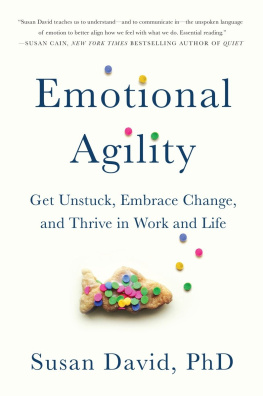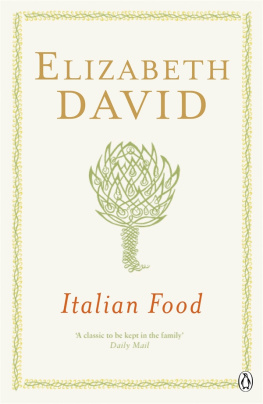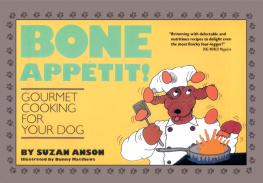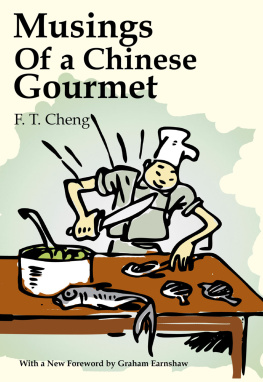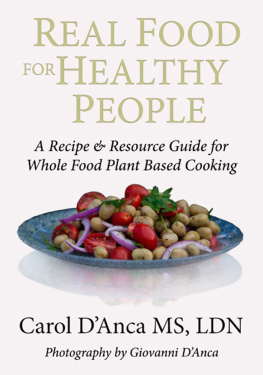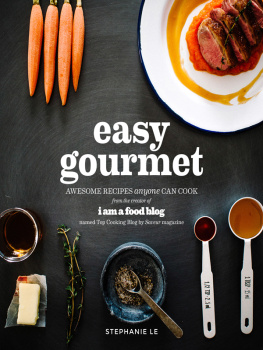ABOUT THE AUTHOR
Joe David has been traveling the globe in search of the perfect meal for decades. To support his food habit, he has taught school; worked in public relations, marketing, and magazine advertising; authored countless articles (many on food and international cooking schools) and four books; and reported five radio stories for NPRs The Best of our Knowledge. He has been a guest on numerous radio and TV shows and is a longtime member of the National Press Club in Washington. Recent articles he has written include an interview with Jacques Ppin and a piece on the Ritz Escoffier Cooking School in Paris.
CONNECTICUT
The Conscious Gourmet
Greenwich, Connecticut
M ost people make food choices based on whats tasty and available, without consideration of whats best for their body. As a result, they unconsciously create health issues for themselves, like weight gain, mood swings, food sensitivities, and even accelerated aging.
Thanks to nutritionists, researchers, doctors, the media, and the food industry, many Americans are beginning to improve their eating habits. They are finally reading the fine print on packages to learn exactly whats in their food and asking themselves, is this really good for me? Some are even beginning to understand that wholesome food is needed not only to sustain the body, but to heal it. This new awareness has led to a noticeable movement in America toward high-quality foods that contain more whole grains, vegetables, and fruits.
Diane Carlson, owner of the Conscious Gourmet, is one of the many who have been helping to develop this emerging interest in healthier eating. Students who take one of her three- or six-day retreats are introduced to a wide range of health-supportive foods and the techniques for preparing them. More importantly, students attending her classes learn to make food choices that will contribute to their health and well-being, and support their personal goals.
ABOUT THE INSTRUCTOR
Some time ago, Diane experienced a series of health issues including high blood pressure, a perforated ulcer, mood swings, and more. Through the assistance of holistic practitioners, she identified the underlying causes and changed her diet to a whole-food eating style. As a result, she was able to bring about a significant improvement in her life and health and move it in a new directionfrom living to eat to eating to live.
Diane Carlson (center) oversees students at work. PHOTO COURTESY OF CONSCIOUS GOURMET
Her first step in this new direction began in 1988 when she graduated from the Natural Gourmet Cookery School in New York City (currently known as Natural Gourmet Institute for Health & Culinary Arts). Shortly afterward, she founded her own business, Five Seasons Whole Foods Cookery and Education Center in Minneapolis. In 1993, after returning to New York, she became the copresident, director, and instructor at the Natural Gourmet Institute. She remained in this position for eleven years, until she resigned in 2003 to found the Conscious Gourmet.
PHILOSOPHY
Diane believes that when the body is no longer stimulated by chemicals, additives, and preservatives, and when foods devoid of nutrition are replaced with high-quality whole foods, people experience a change in how they feelmentally, physically, and emotionallyand they start losing weight naturally. She doesnt call eliminating problem-causing foods dieting (because that implies taking something away); instead, she prefers to call it a new style of eatingor, to use her words, a way to become a conscious gourmet, someone aware of the effects of their food choices.
Wild Rice and Chestnut Dressing |  |
Compliments of Diane Carlson
This dressing makes an excellent addition to a meal as well as a delicious stuffing for poultry or for your favorite squash, such as acorn, sweet dumpling, or hubbard (a large blue- or orange-skinned sweet squash). Since it has a complement of grains and nuts, it offers a complete vegetarian protein source.
One of Dianes favorite tricks is to use a hubbard squash in the shape of a turkey. She cuts off the neck, removes the seeds, and partially bakes both the squash and the neck. She then stuffs the squash with the wild rice and chestnut dressing, replaces the neck with toothpicks, and continues to bake the squash until soft to the touch. When served on a platter surrounded by greens or colorful vegetables, it looks just like a turkey.
Ingredients
cup raisins brought to a boil with 1 cup water
cup reserved raisin stock
1 tablespoon extra virgin olive oil
1 cup chopped Spanish onions
1 cup diced celery
1 cup shredded carrots
1 cup chopped mushrooms
1 large clove garlic, minced
teaspoon dried thyme
teaspoon dried sage
teaspoon dried rosemary
teaspoon celery seed (optional)
teaspoon sea salt
teaspoon black pepper
4 cups cooked wild rice or 2 cups cooked wild rice and 2 cups cooked brown Basmati rice
cup vacuum-packed, roughly chopped chestnuts
cup roughly chopped roasted walnuts
cup minced parsley
cup finely sliced scallions
2 tablespoons tamari or shoyu
2 tablespoons lemon juice
Sea salt and freshly ground black pepper to taste
Chopped fresh parsley (for garnish)
Shoyu is a soy sauce consisting of water, soybeans, wheat, sea salt, and koji. Diane prefers the Eden brand. Wheat-free shoyu is often called tamari. It is found in any health food store.
1. In a pot, bring the raisins to a boil. Lower heat and simmer until raisins are plump. Drain and reserve cup of the raisin stock. Set aside raisins and reserved stock.
2. Heat oil in a 12-inch frying pan over medium heat. Add onions and saut until soft and translucent. Add celery and saut until crisp tender.
3. Add carrots, mushrooms, and garlic and saut until mushrooms become limp.
4. Add herbs, celery seed, sea salt, and black pepper, and saut an additional minute.
5. Add the rice to the sauted mixture. Add the raisins and reserved raisin stock. Add the next six ingredients and combine well. Season with salt and pepper to taste. If the dressing is to be served as a side dish, place it in an oiled covered casserole and bake in a 350F oven for 30 minutes. Serve garnished with chopped parsley.
Serves 810.
As a teacher, she is committed to providing students with solid information that is essential for their health and well-beingand for liberating their bodies from food cravings caused by nutrient deficiencies. To feel satisfied after a meal, free of such cravings, Diane recommends choosing the highest quality foods available. Ideally, this includes whole, fresh, natural, seasonal, local, and organic foods that are sustainably produced. It is also important that the meal is delicious, balanced, and satisfying by consciously including a variety of colors, flavors, cooking methods, and textures. If any of these menu-planning principles are out of balance, it can lead to after-meal food cravings. For example, a meal with too much or too little fat will likely bring about a craving for sugar. A meal that is predominantly soft in texture will often send the diner looking for something dry and crunchy later. When the willpower breaks down, people often seek the very food they are trying to avoid, and they end up consuming excess calories to satisfy the craving caused by an imbalanced meal. Being consciously aware of these principles and planning meals accordingly will result in a meal that will leave diners feeling content. (See Dianes recipe for Wild Rice and Chestnut Dressing as an example of a food with all the right ingredients.)






